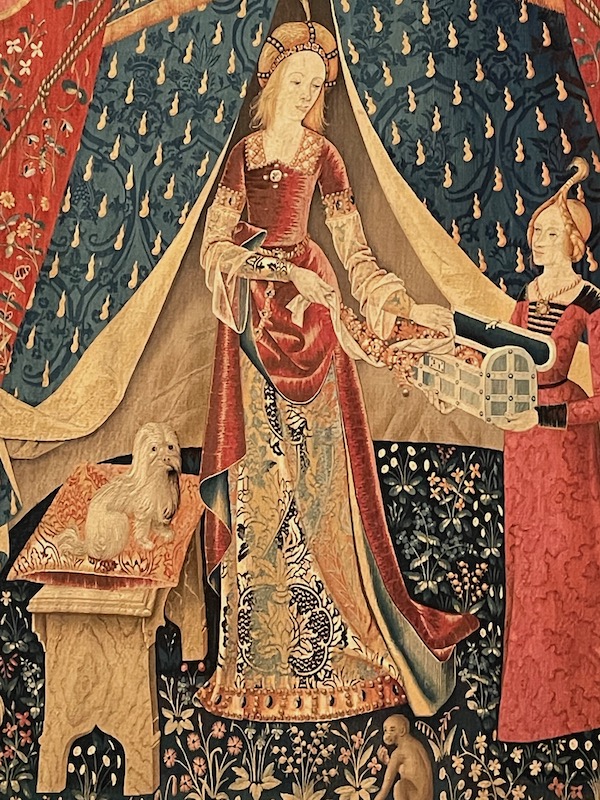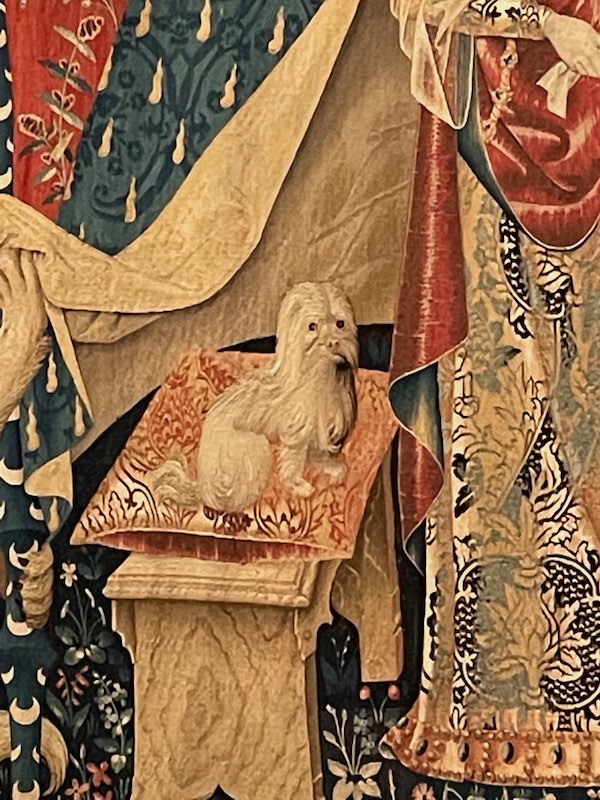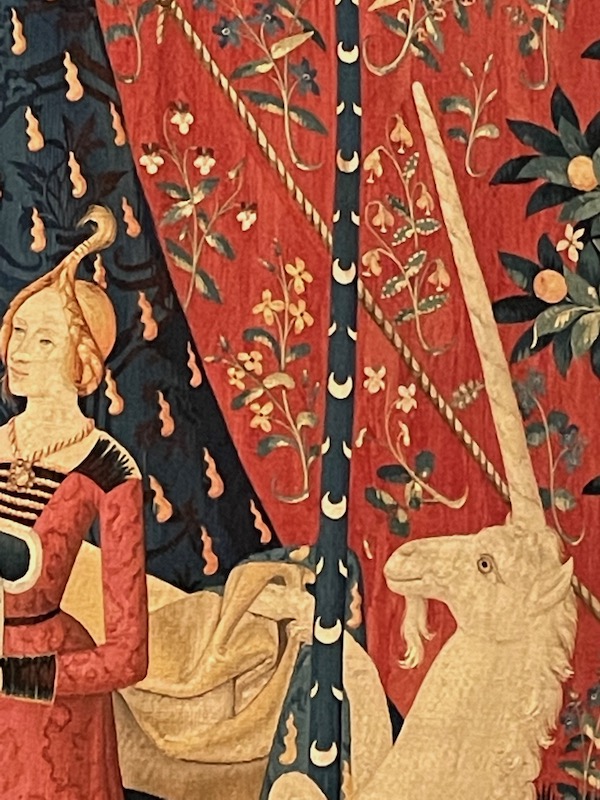Our Blog - The "Lady and the Unicorn" tapestries
This set of 6 tapestries are normally on display at the Cluny Museum in Paris, and we have seen them there many years ago. They are doing some work at the Cluny and so the museum is temporarily closed. During the closure, the tapestries made a brief visit in Toulouse, and we went over to look at them again. They date to around 1500 but the actual place they are woven is not known. The weaving is very neat, and so many people think they come from Flanders, but they could have been done in Paris as well. The coat of arms, a blue background with 3 white crescents, makes it possible to identify that the Viste family was who the pieces were woven for. It could have been Jean IV Le Viste, who died in 1500, or his nephew Antoine, who died in 1532. We will look at each individual tapestry.
All of the tapestries have a similar composition. They all have a red background and show at least one elegant lady with a unicorn and a lion. Each lady represents one of the 5 senses, plus a 6th sense called "my only desire". There are also various banners, capes or shields with three crescents, trees, flowers, and various animals (birds, rabbits, fox cubs, a lion cub, lambs, birds, monkeys, and panthers). In the first five tapestries, one or more of the animals are shown using the represented sense along with the woman. In Touch, the unicorn can presumably feel the lady's hand touching its horn; in Taste, a monkey is eating a sweetmeat; in Smell, the monkey is sniffing a flower; in Hearing, the animals presumably all hear the music; and in Sight, the unicorn is gazing at itself in a mirror.
A little piece of trivia: All six tapestries are used to cover the bare stone walls in the Gryffindor common room in the Harry Potter films. You can see a picture of this on Wikipedia, showing the Common Room at the Warner Brothers Studio Tour in London ... they are behind large paintings.
Taste - the lady takes sweets from a dish held by a maidservant. Her eyes are on a parakeet on her upheld left hand. The lion and the unicorn are both standing on their hind legs, reaching up to pennants that frame the lady on either side. The monkey is at her feet, eating one of the sweetmeats.

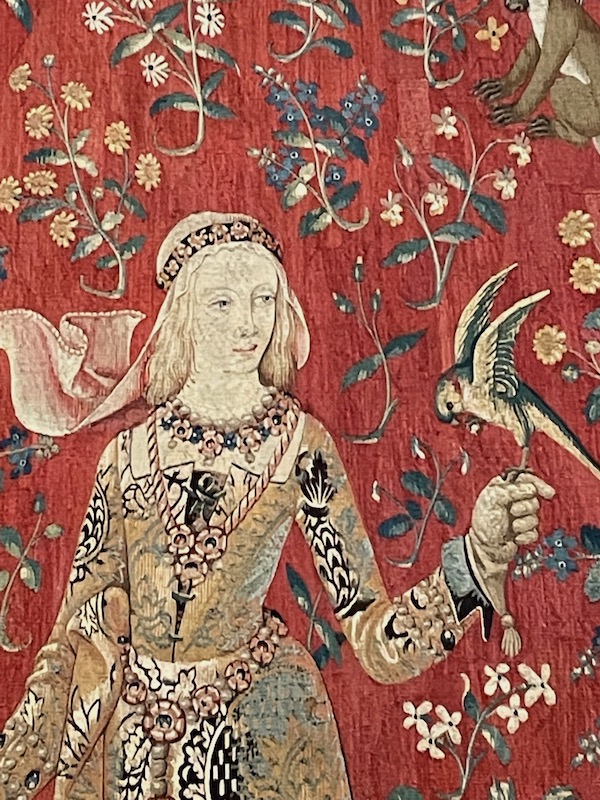

Hearing - the lady plays a portative organ on top of a table covered with an Oriental rug. Her maidservant stands to the opposite side and operates the bellows. The lion and unicorn once again frame the scene holding up the pennants. Just as on all the other tapestries, the unicorn is to the lady's left and the lion to her right.
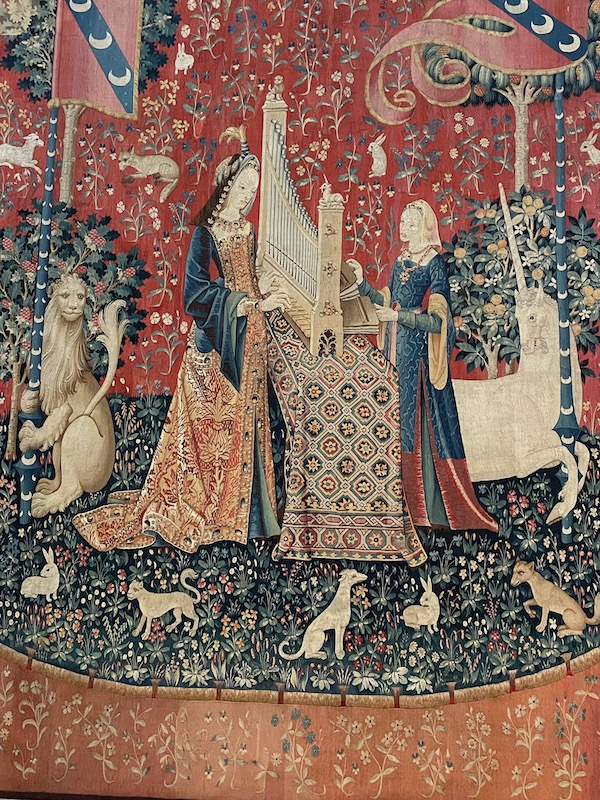

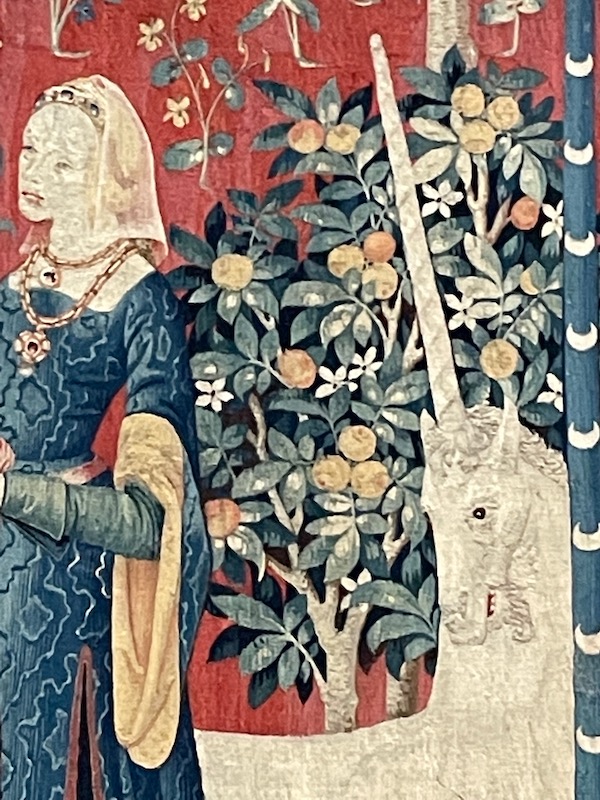
Sight - the lady is seated, holding a mirror up in her right hand. The unicorn kneels on the ground, with his front legs in the lady's lap, from which he gazes at his reflection in the mirror. The lion on the left holds up a pennant.

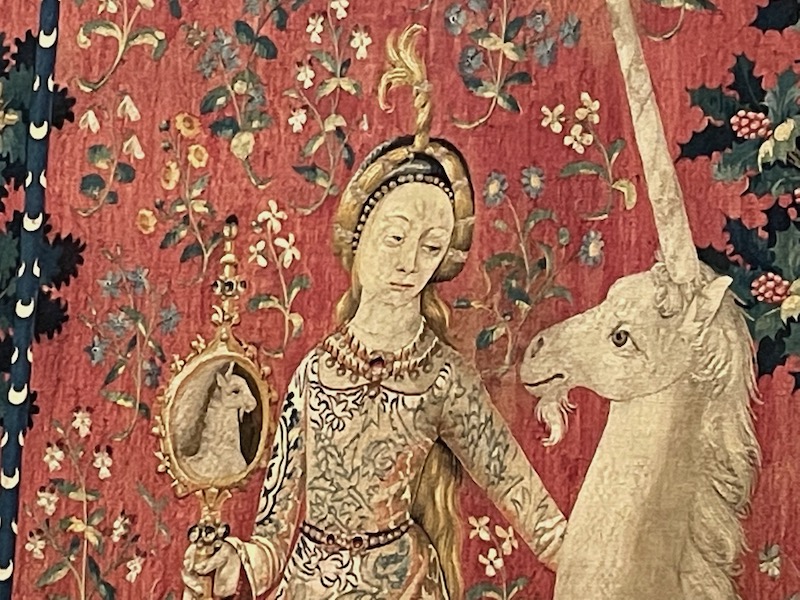
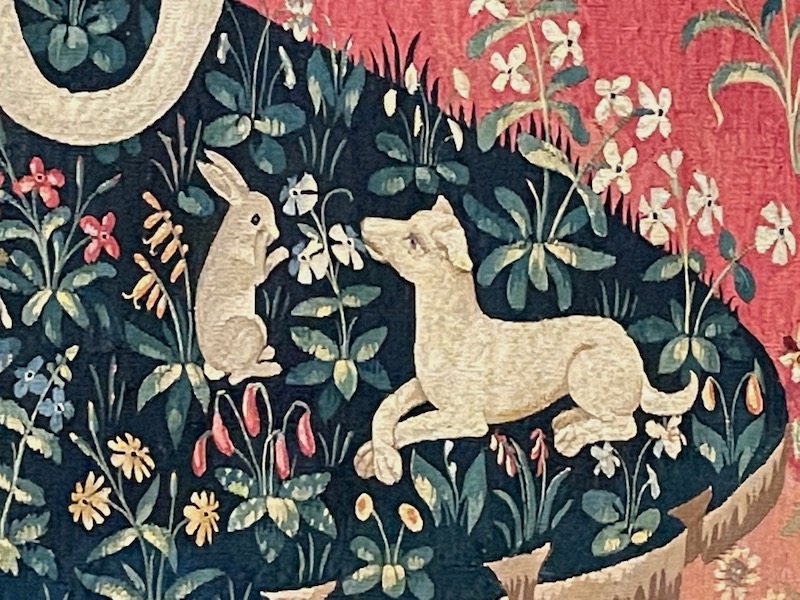
Smell - the lady stands, making a wreath of flowers. Her maidservant holds a basket of flowers within her easy reach. Again, the lion and unicorn frame the lady while holding on to the pennants. The monkey has stolen a flower which he is smelling, providing the key to the allegory.

Touch - the noble lady stands with one hand touching the horn of a unicorn, and the other holding up a pennant. A lion sits to the side and looks on.

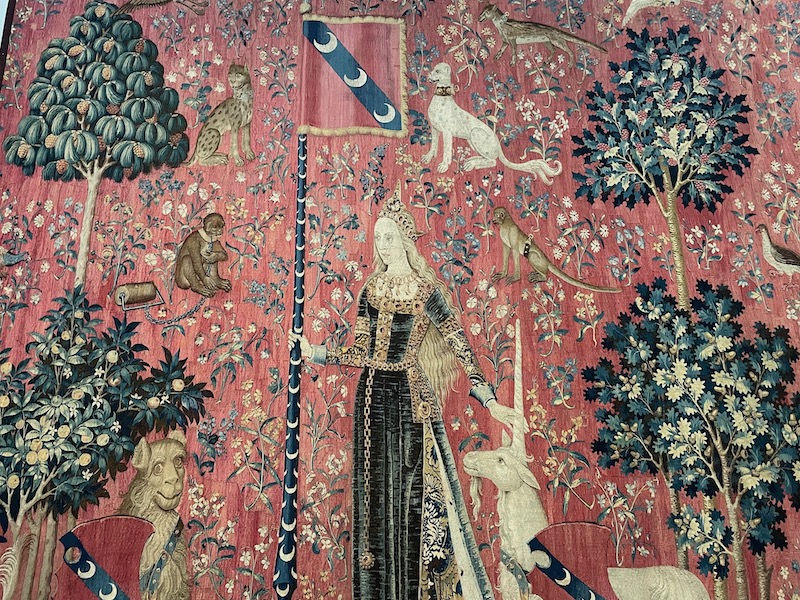

À mon seul désir, or my only desire - the lady stands in front of a tent, across the top of which is inscribed her motto, "À Mon Seul Désir". This motto normally is used to indicate courtly love, adopted by the nobility during the age of chivalry. Her maidservant stands to the right, holding open a chest. The lady is placing the necklace she wears in the other tapestries into the chest. To her left is a low bench with a dog, possibly a Maltese, sitting on a decorative pillow. It is the only tapestry in which the lady is seen smiling. One interpretation of this tapestry is that the lady is putting the necklace into the chest as a renunciation of the passions aroused by the other senses, and as an assertion of her free will.

